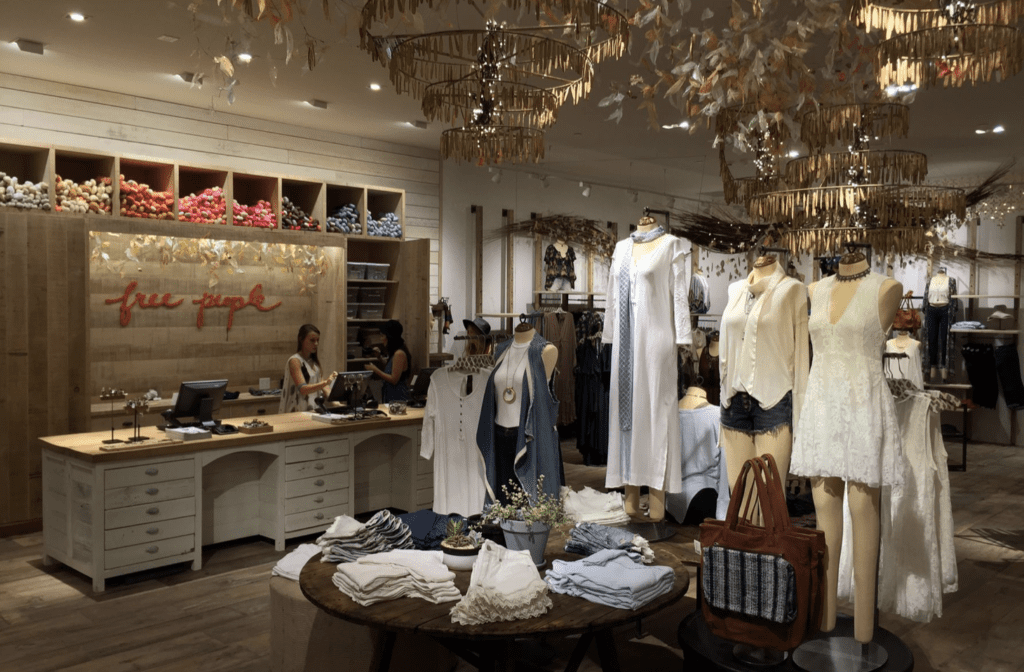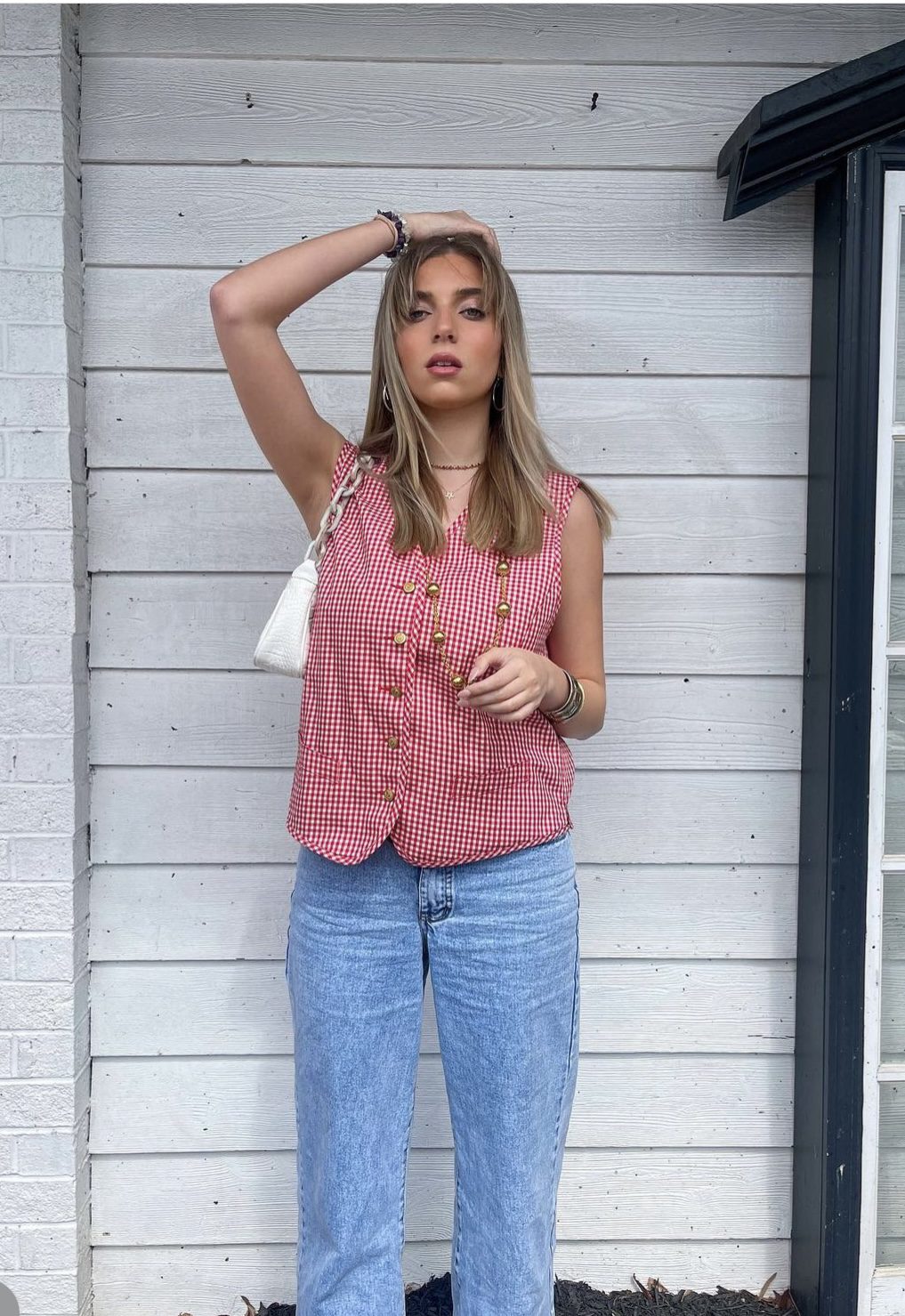
Is Free People Sustainable?
Free People is not sustainable, which is shocking given the price tag attached to most of its items. Just browsing through the website, many of its dresses are over $100, most tops are anywhere from $38 to over $100 and most pants are close to or over $100.
Typically a dead giveaway that a brand is not sustainable is when the prices are ridiculously low. With that not being the case here, we have to look a little deeper into the company’s practices.
Who is Free People?
Free People is a clothing store that was started in the 1970s in West Philadelphia, PA by Dick Hayne. He wanted to bring a sense of freedom to the young people who shopped at the store. The brand provided a bohemian clothing style for them to explore.
It soon was renamed to Urban Outfitters and in the 1980s, the company revived the original name as its own line in 1984. Starting from that one store, there are now more than 1,400 stores globally.
Free People is now a subsidiary of URBN. URBN also owns well-known brands like Urban Outfitters, Anthropology, FP Movement, and Nuuly.
What are Free People’s Sustainable Ratings?
Free People is universally rated as not sustainable.
Free People’s environmental impact
Brand rating site Good On You, rates Free People as ‘not good enough’ for its sustainability. When looking at how Free People manufactures their clothes, they find there is no evidence that they minimize textile waste, reduce water consumption, or reduce the use of hazardous materials. Even though they rely on some renewable energy in their direct operations, they don’t do this for their supply chain, which is a major downside.
Their clothing
The Roundup, another website dedicated to informing the public about sustainable living and eco-friendly products, has a lot to say about Free People as well. According to The Roundup, Free People offers a minimal selection of clothes made from eco-friendly materials and has shown no initiatives to reduce carbon emissions, toxic chemicals or water usage.
Their supply chain, governance, and transparency:
According to the Fashion Transparency Index 2022 report, Free People scored a 14/100 (actually down from 21/100 in 2020). The score is a composite of scores across 5 categories, ranking companies for their policies and commitments, how they are governed, how easy it is to trace their clothing from fabric to fabrication, how their supply chains are, and what they’re doing to address problems. We’ll return to some of their sub-scores further down the page.
Their design sourcing
The last indicator that Free People is not sustainable comes from where its designs come from. In May, Rachel Faller, co-creator of the ethical fashion brand tonlé, spoke out about how Free People copied one of her designs. This is just one instance of the many times Free People has copied small clothing lines’ designs. Copying designs is a practice fast fashion brands use constantly to pump out new clothes quickly and cheaply. Many of these will be purchased and then potentially quickly discarded because of the poor quality. Thus bringing down their sustainability.
Is Free People’s clothing made from eco-conscious materials?
While Free People claims to use eco-conscious linen, hemp, and cotton, they fail to mention how much they use. With no hard and fast numbers, it’s really hard to make a judgment call about this. It could be most of it. It could be 50%. It could even be 1%, and technically, that would qualify them as using eco-conscious materials.
Remember when I said we’d return to their scores? Good on You and The Roundup actually note that they actually use few eco-conscious materials. The Fashion Transparency Index rates them a 1 OUT OF 100 in terms of how easily you can trace their raw material suppliers, where fabrics are processed, and where garments are initially made; they also score them an 8/100 in terms of making efforts to understand environmental impact, disclosing findings, and making efforts to fix issues.
So can we say they are making an effort to rely on eco-conscious materials? Not really.
Is Free People’s clothing made from upcycled materials?
Free People claims to make clothing from upcycled materials, like secondhand and deadstock fabrics.
Sounds good, right?
Guess what: it doesn’t amount to much.
We don’t know exactly how much of Free People’s clothing is made from upcycled materials, but we do have an idea of how much effort their parent company URBN is making. They partnered with FABSCRAP to upcycle deadstock and surplus fabric and reported that in 2021, they recycled close to 3 tons (5,858 lbs) of fabric (and that’s across ALL their brands, not just Free People).
5,858 lbs sounds like a lot until you get more context. Just a paragraph lower on that same page, they say that “each year, over 6.3 million tons of textiles are wasted during the design and production process to make clothing.” But it’s even more damning than that: Good on You notes that “92 million tons of textile waste” are made every year.
Are Free People’s clothing lines made using sustainable processes?
URBN, parent company of Free People, has made progress on reducing its environmental impact in its stores and supply chains, not in the clothes they make.
While using less energy and relying more on renewable energy is a good thing, these efforts do more to bolster their profits in the long-term and less to address the environmental impact from their fabrics and the manufacturing of their clothes.
Remember: the Fashion Transparency Index rated them 8 OUT OF 100 in terms of trying to know their environmental impact, be public about it, and fix it, and 1 OUT OF 100 (down from 33 out of 100 in 2020) in terms of being transparent about where their fabrics and initial garments come from.
Are Free People’s clothing lines ethical and made by hand?
They’re made by hand, but not ethically. I know I just said it, but that 8 out of 100 score is also about human rights, and the 1 out of 100 score includes knowing who is making their fabrics and clothes and how those facilities treat their workers. The Fashion Transparency Index also rates them 33 out of 100 on their policies and commitments, which includes animal welfare, labor conditions, forced labor and child labor, fair wages, and so on.
Is Free People Fast Fashion?
Yes. They frequently publish new collections (fast fashion relies on the concept of “microseasons” – think a new collection of clothes every week or every other week), they add new clothes for sale on their website on a daily basis, they’ve been known to copy other designs (a hallmark of fast fashion), and the site openly admits the goal of their stores is to ensure no single person walks out wearing the same thing, “so that even if she takes her best pal shopping, they won’t come out looking at all alike.”
Is Free People Trying to be More Sustainable?
Although Free People does have many marks against them when it comes to sustainability, the company does have a few initiatives in place to better itself. These initiatives all fall under its Care FP clothing collection. The initiatives include:
- Thoughtful Living: Products designed with eco friendly materials
- Made with Love: Ethical products made by hand
- Circular Designs: Styles and Products made from upcycled materials
- Clean Beauty Products: Tools, sustainable options and pro-vetted certifications for clean living
What are Some Sustainable Alternatives to Free People?
If you love Free People’s clothes the but want to support support sustainability there are some alternatives. Here are a few:
TAMGA Designs
TAMGA Designs was rated ‘Great’ on Good On You for its locally made clothes from surplus fabric and reduction of toxic materials and chemicals. The clothes on its website are boho and vintage styles just like Free People and the prices here seem potentially a bit cheaper, depending on what you are looking for, as well.
tonlé
This company I mentioned before as one that Free People had copied a design from. That being said, the style this company offers is very similar to what Free People does. On top of that, it was rated ‘Great’ on Good On You. This company minimizes waste, water use and uses eco-friendly materials

If you have any questions, please contact me at LexySilverstein@gmail.com. By the way, if you want more information on the sustainable dress I’m wearing please in the photo above, visit the website of the talented designer Natalia Trevino Amaro.
Follow me on my socials: Instagram: @lexysilverstein Youtube: Lexy Silverstein Twitter: @eLEXYfy TikTok: @lexysilverstein Facebook: Lexy Silverstein Liketoknow.it/lexysilverstein










